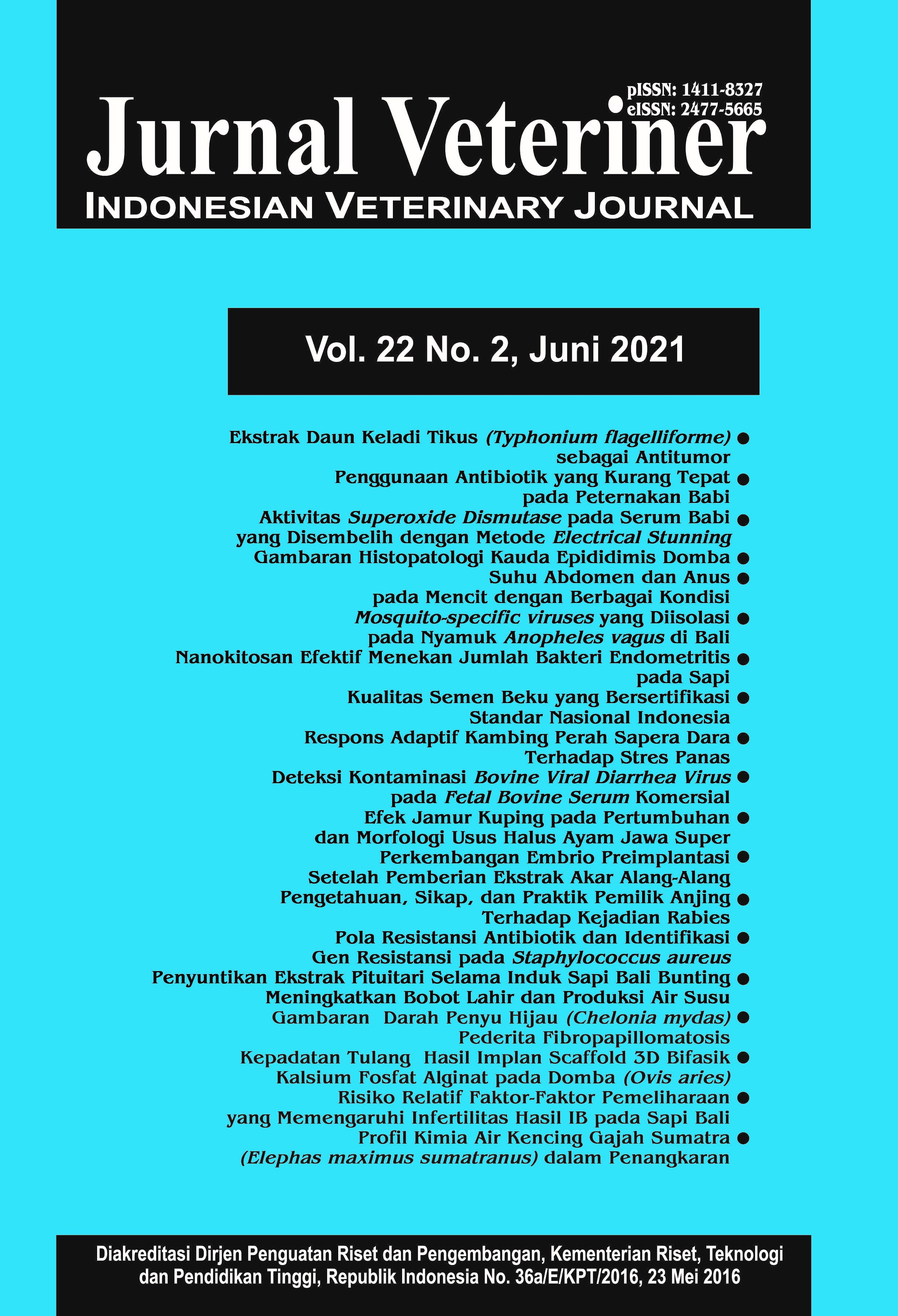Respons Adaptif Kambing Perah Sapera Dara Terhadap Stres Panas Akibat Perubahan Kuantitas Pakan
ADAPTIVE RESPONSE OF YOUNG SAPERA DAIRY GOAT ON HEAT STRESS DUE TO CHANGE IN FEED QUANTITIES
Abstract
This study aimed to evaluate the adaptive response of young sapera dairy goats on heat stress due to changes in feed quantities. Four young sapera dara dairy goats was kept in individual cages measuring 1.6 × 1.0 m2. Feeding in the form of concentrate and silage, respectively 800 g/day (A), 500 g/day (B), 200 g/day (C), and without feeding (D). The study design used Latin squares 4x4 with observed parameters including environmental conditions, physiological and haematological responses. The results showed that the air temperature, humidity, and wind speed in the cage were 20.94-31.59 °C, 47.19-99.20 %, and 1.81-2.02 m/ sec, respectively. Physiological and haematological responses of the four groups indicated that skin temperature, respiratory rate, and haematological parameters did not show significant differences (P>0.05), while body and rectal temperature, and heart rate showed differences (P<0.05) only at several points of observation, especially between groups A and D. In general, the rectal temperature and heart rate of 38.5-39.3 °C and 72.0-99.5 times per minute were still within the normal range. The physiological and haematological response values of group D that were lower than another groups indicated that reducing feed intake would reduce the metabolic heat generated in an effort to maintain the body’s thermal balance and the adaptive response of goats. This indicates that the young sapera dairy goat has the adaptive ability to heat stress due to changes in feed quantity.



















